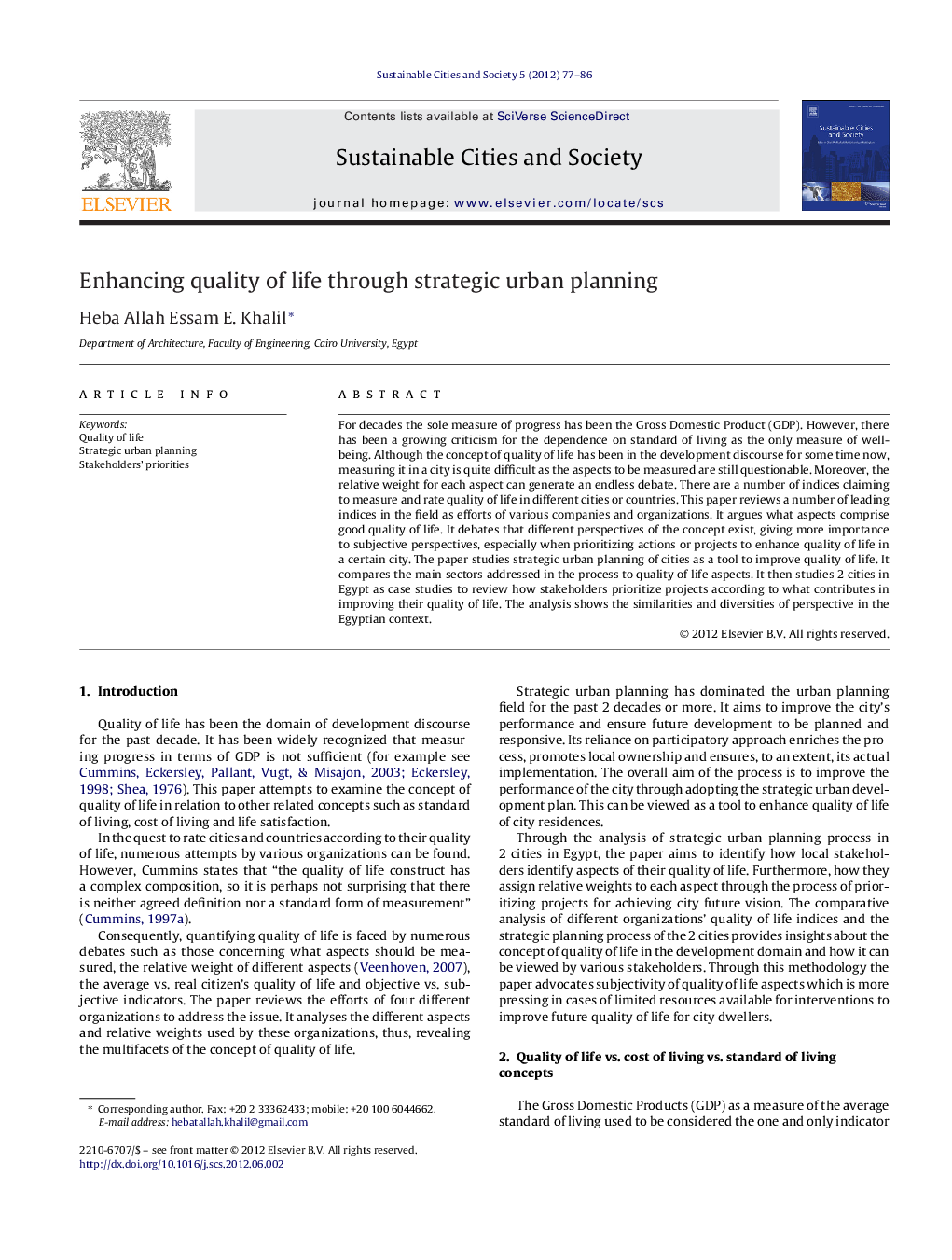| Article ID | Journal | Published Year | Pages | File Type |
|---|---|---|---|---|
| 308186 | Sustainable Cities and Society | 2012 | 10 Pages |
For decades the sole measure of progress has been the Gross Domestic Product (GDP). However, there has been a growing criticism for the dependence on standard of living as the only measure of well-being. Although the concept of quality of life has been in the development discourse for some time now, measuring it in a city is quite difficult as the aspects to be measured are still questionable. Moreover, the relative weight for each aspect can generate an endless debate. There are a number of indices claiming to measure and rate quality of life in different cities or countries. This paper reviews a number of leading indices in the field as efforts of various companies and organizations. It argues what aspects comprise good quality of life. It debates that different perspectives of the concept exist, giving more importance to subjective perspectives, especially when prioritizing actions or projects to enhance quality of life in a certain city. The paper studies strategic urban planning of cities as a tool to improve quality of life. It compares the main sectors addressed in the process to quality of life aspects. It then studies 2 cities in Egypt as case studies to review how stakeholders prioritize projects according to what contributes in improving their quality of life. The analysis shows the similarities and diversities of perspective in the Egyptian context.
► Analysing efforts to measure quality of life indices shows its multifacets. ► Identifying how local stakeholders’ view aspects of their quality of life. ► Stakeholders assign weights to aspects through project prioritizing process. ► Strategic planning is a subjective tool to identify how to enhance quality of life. ► The index and strategic planning process can together improve quality of life.
